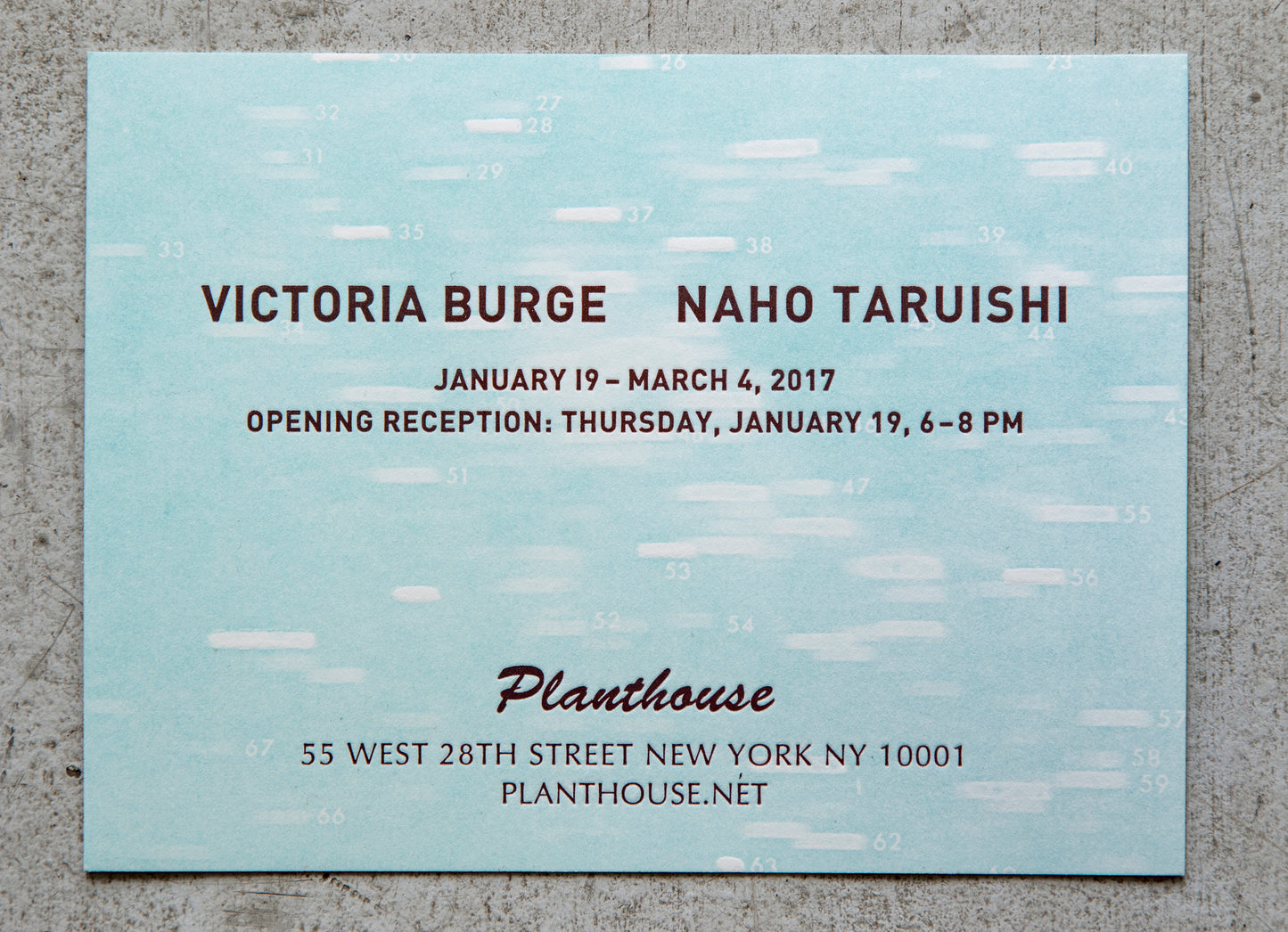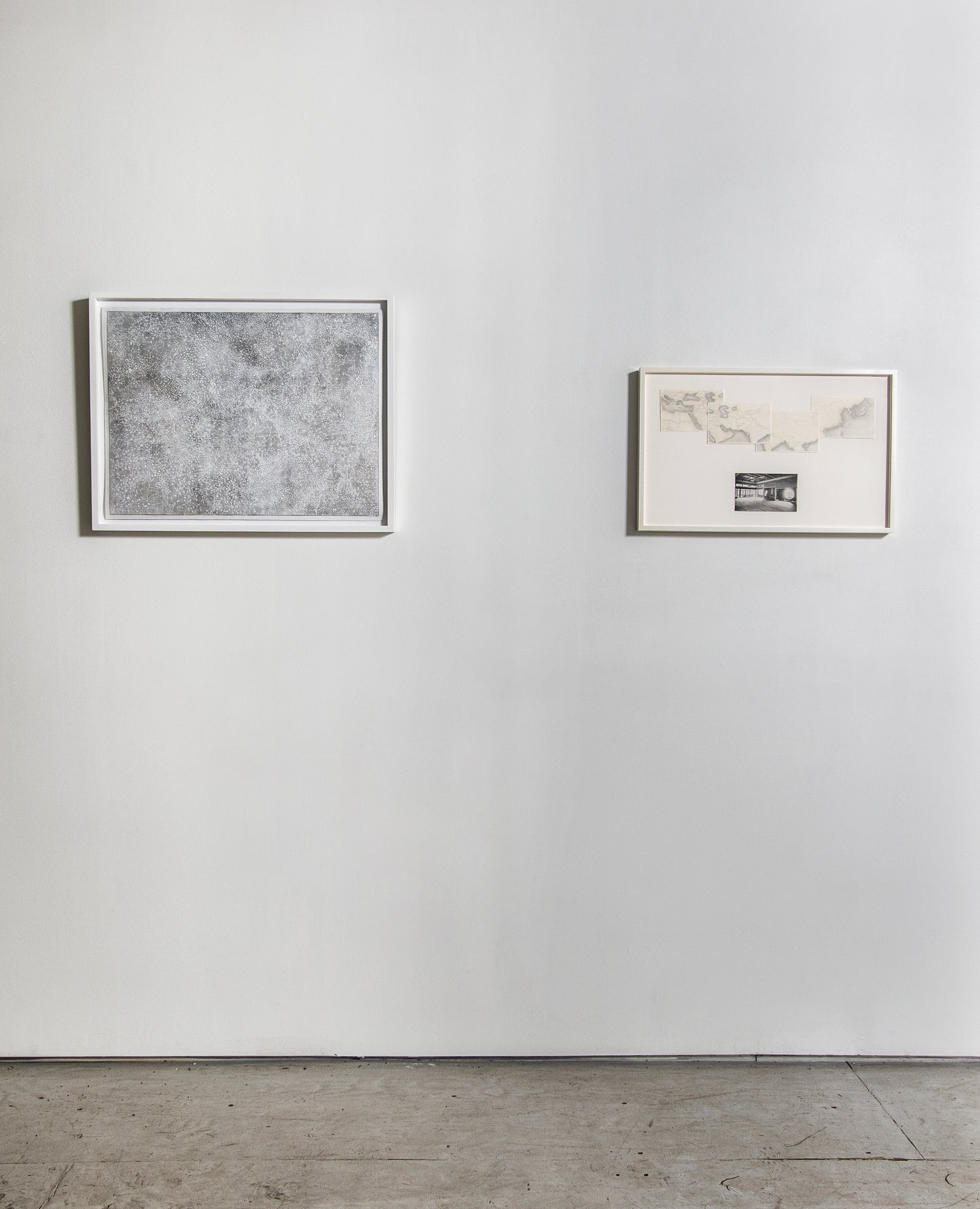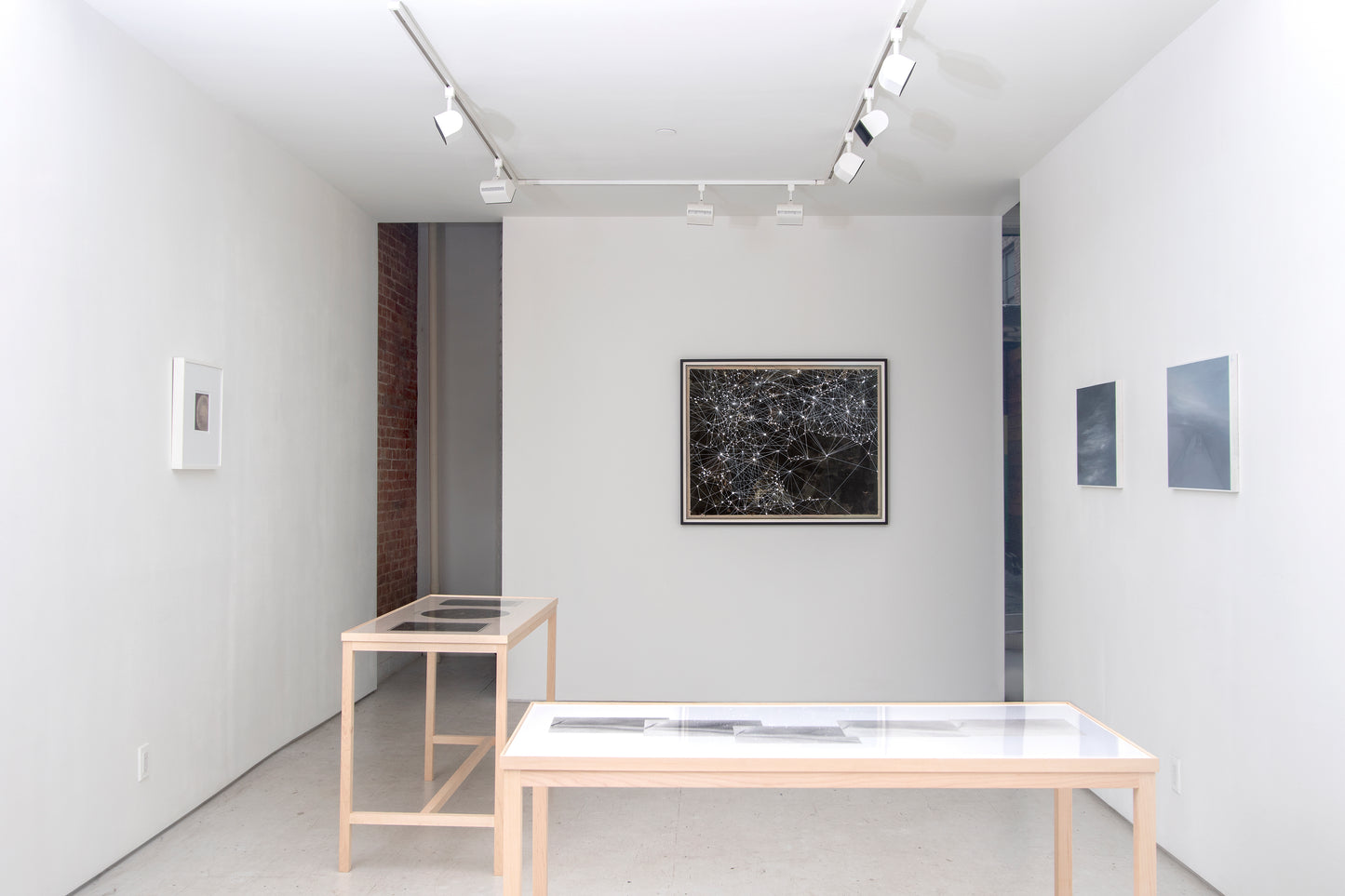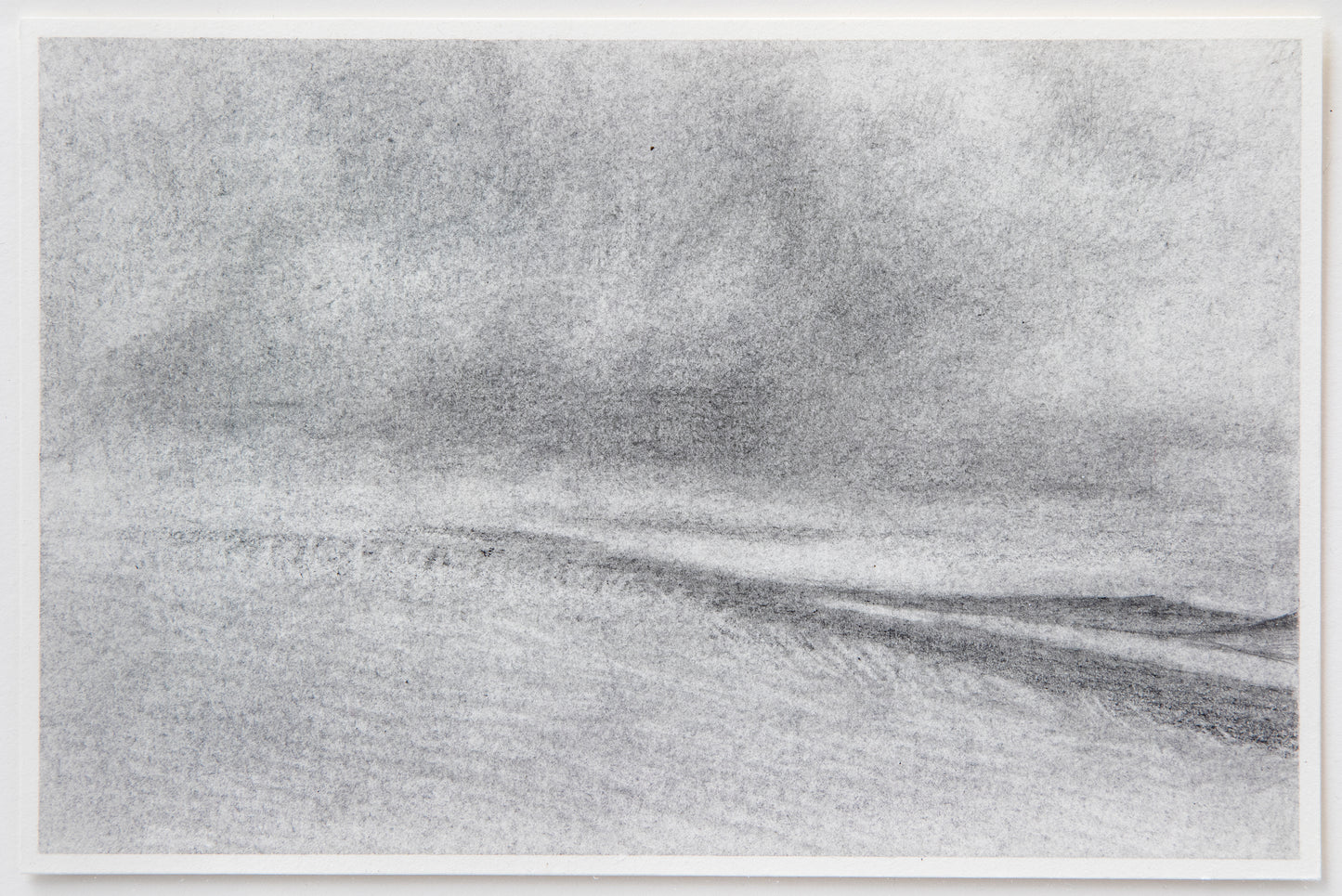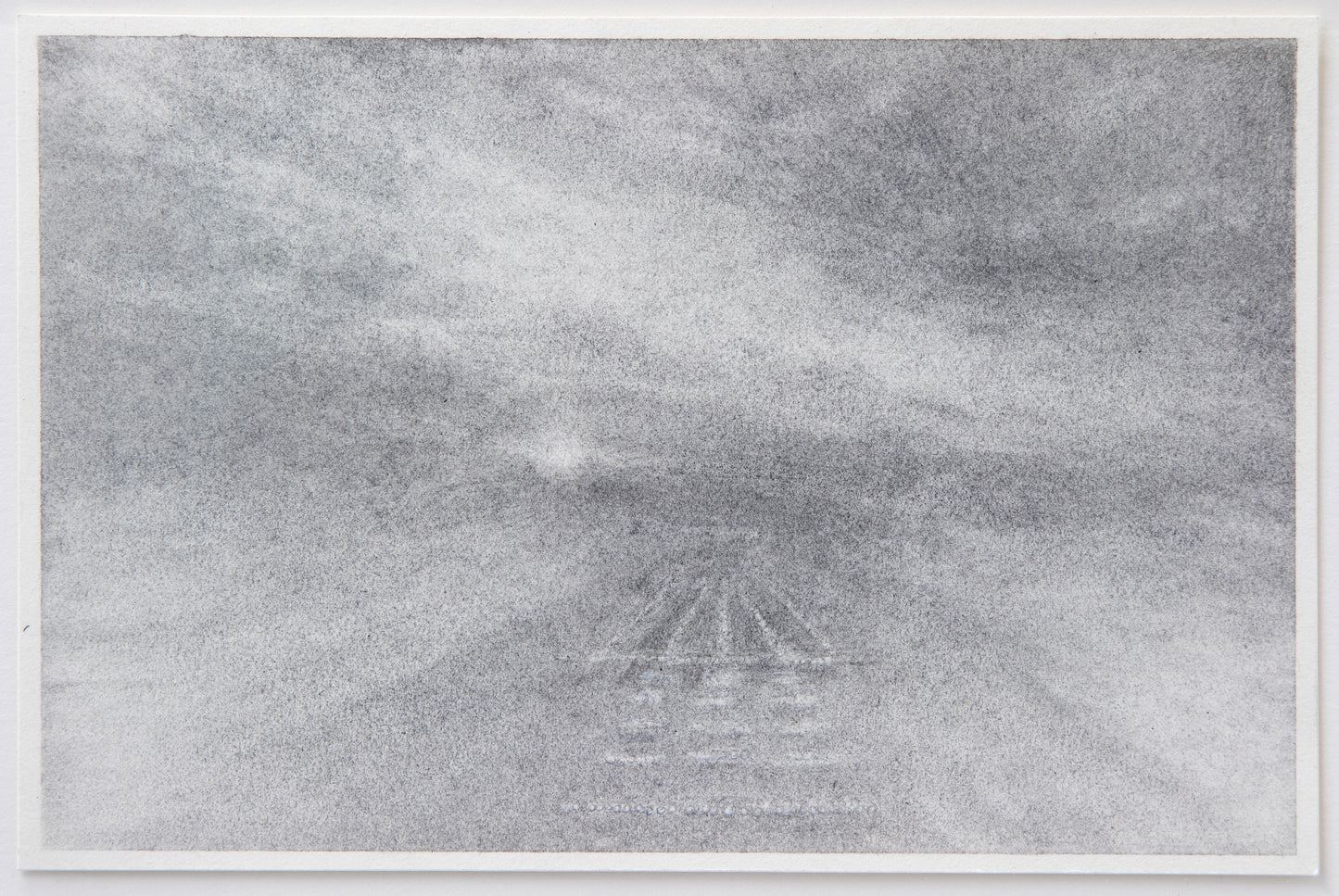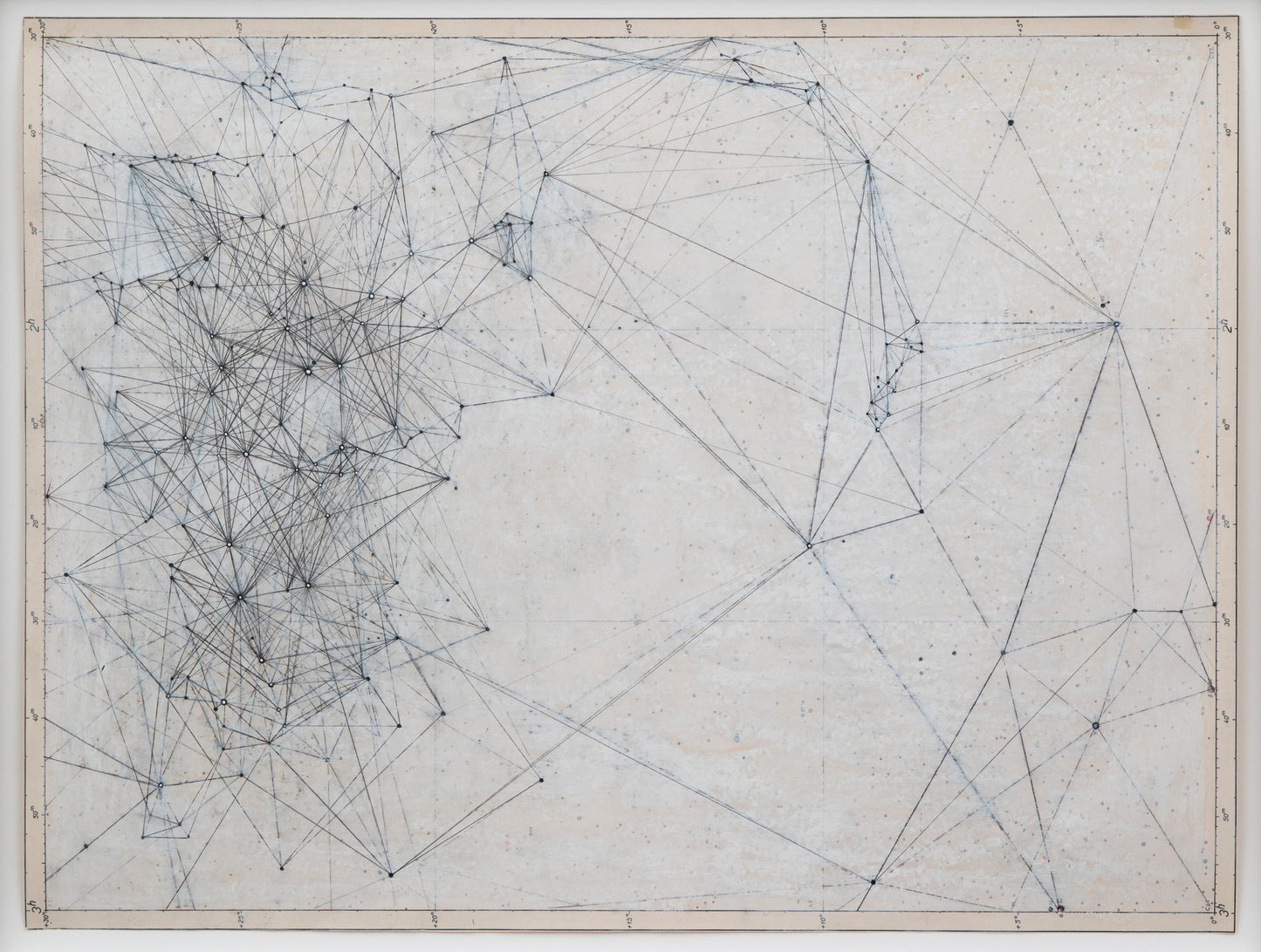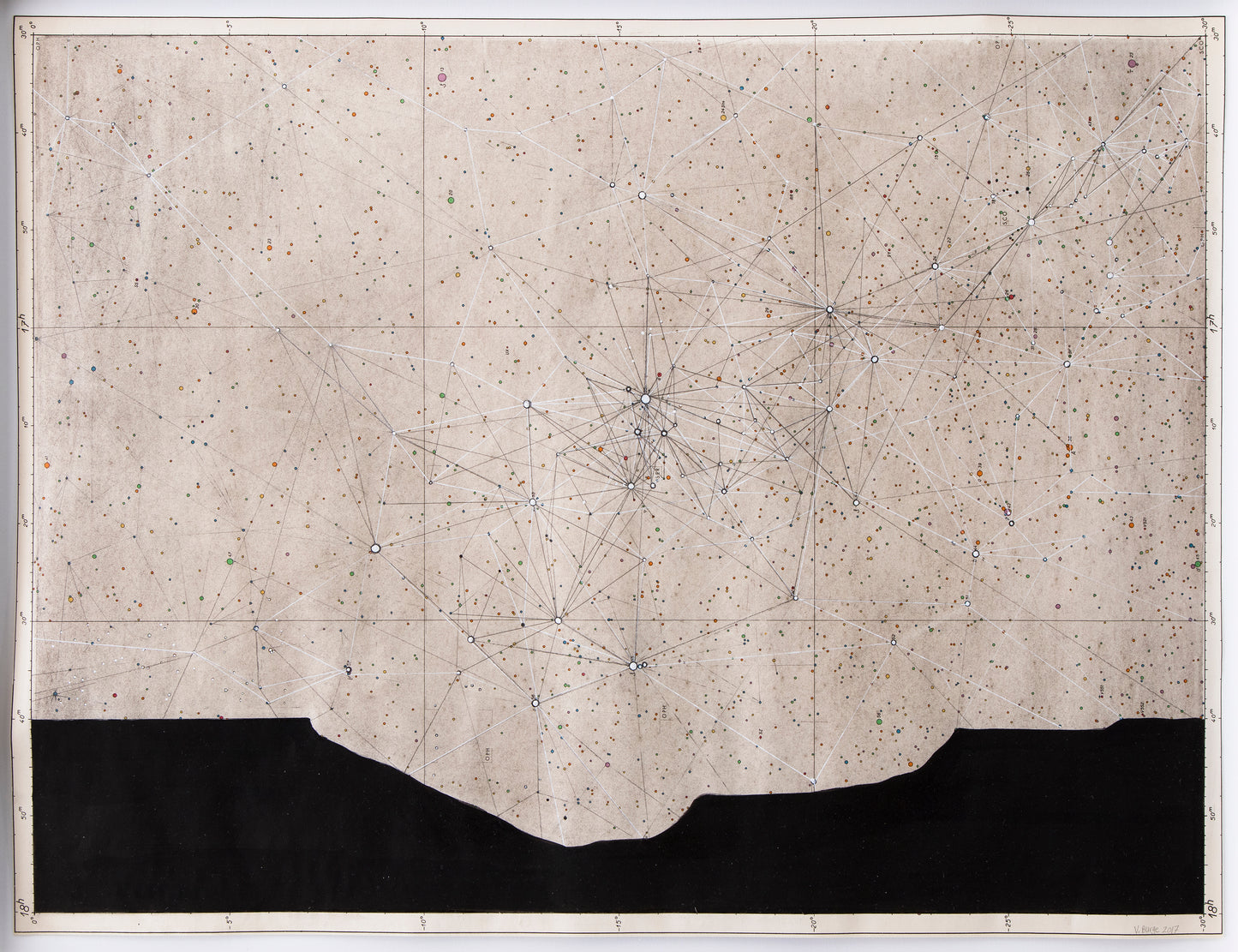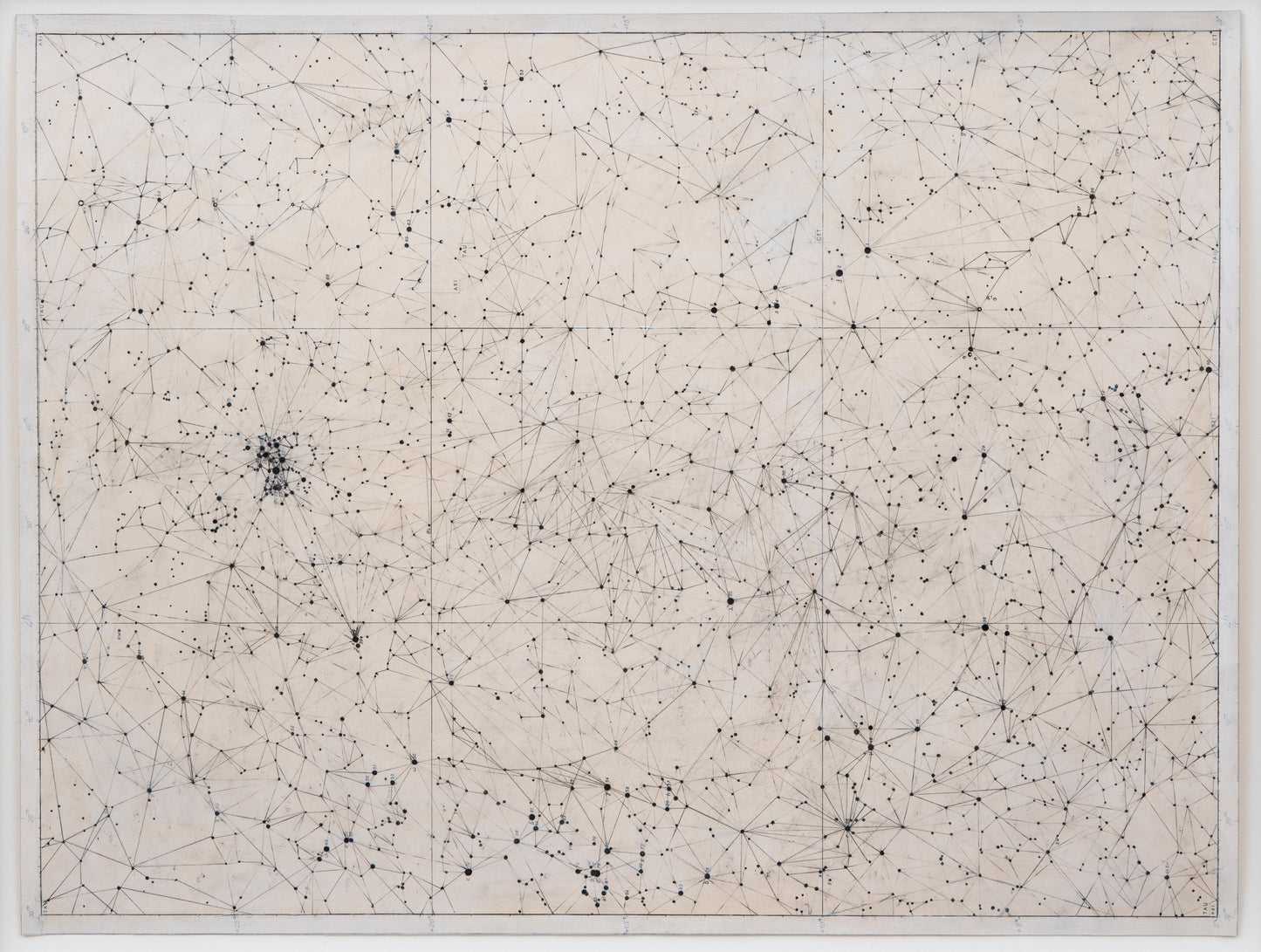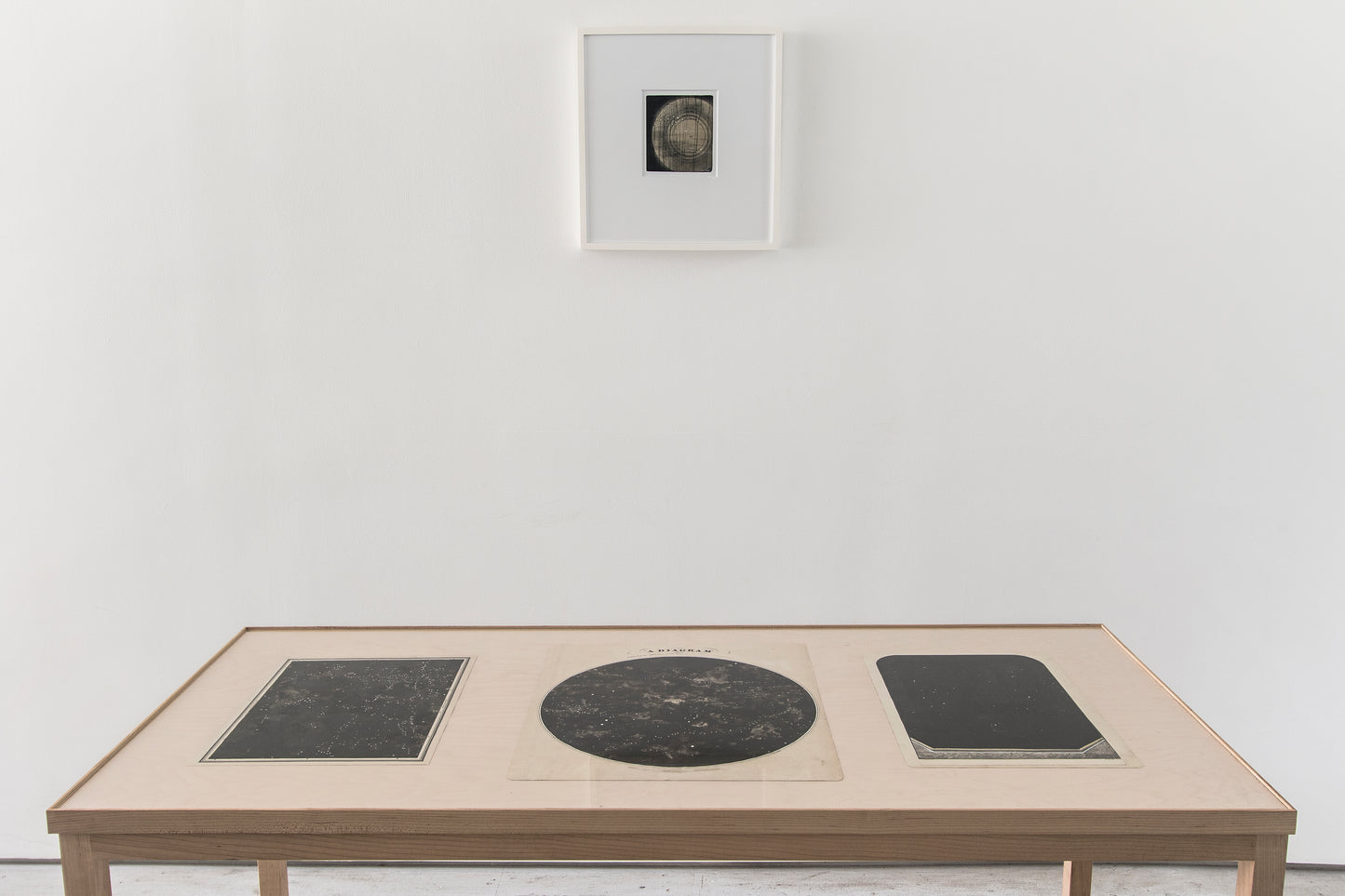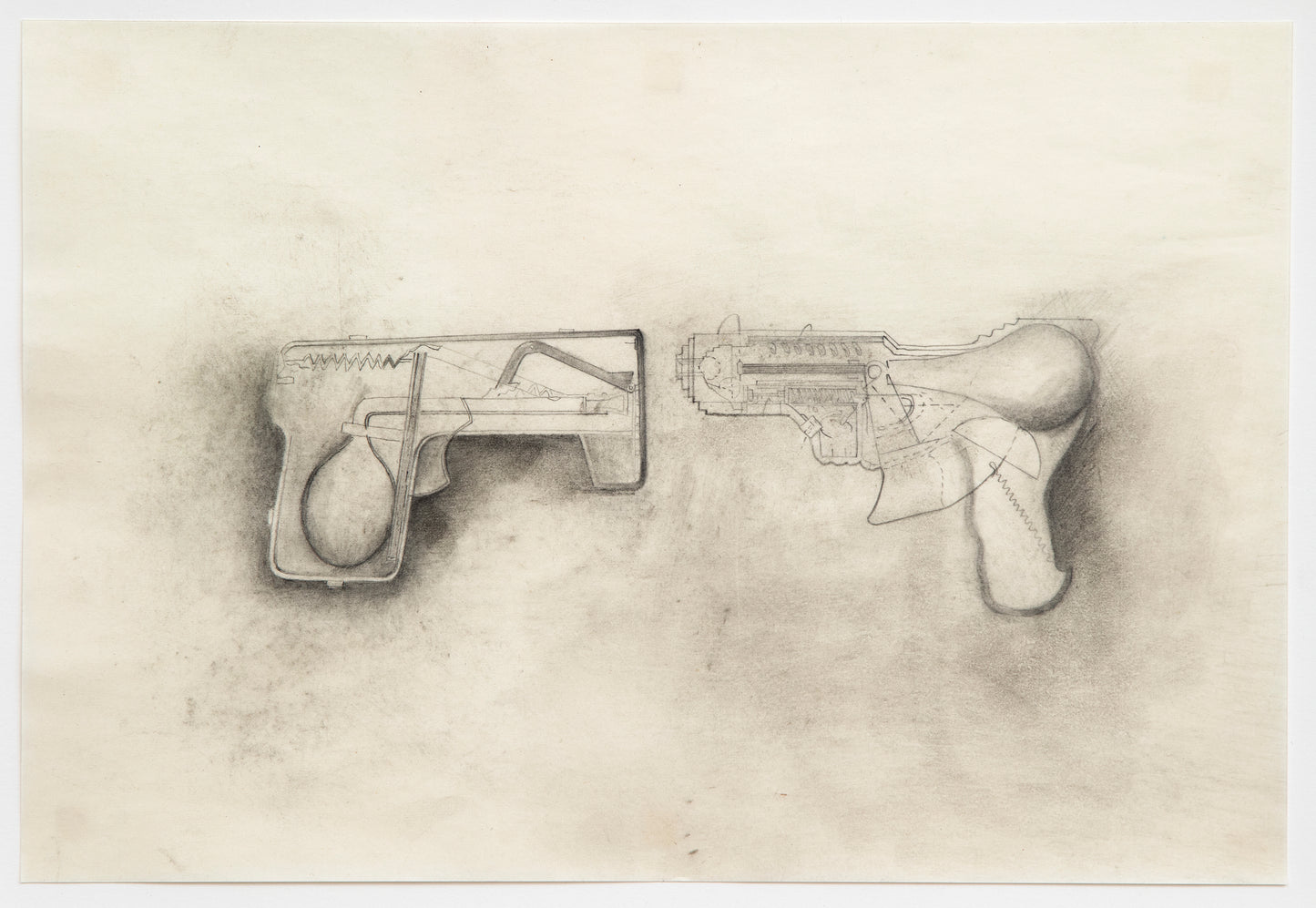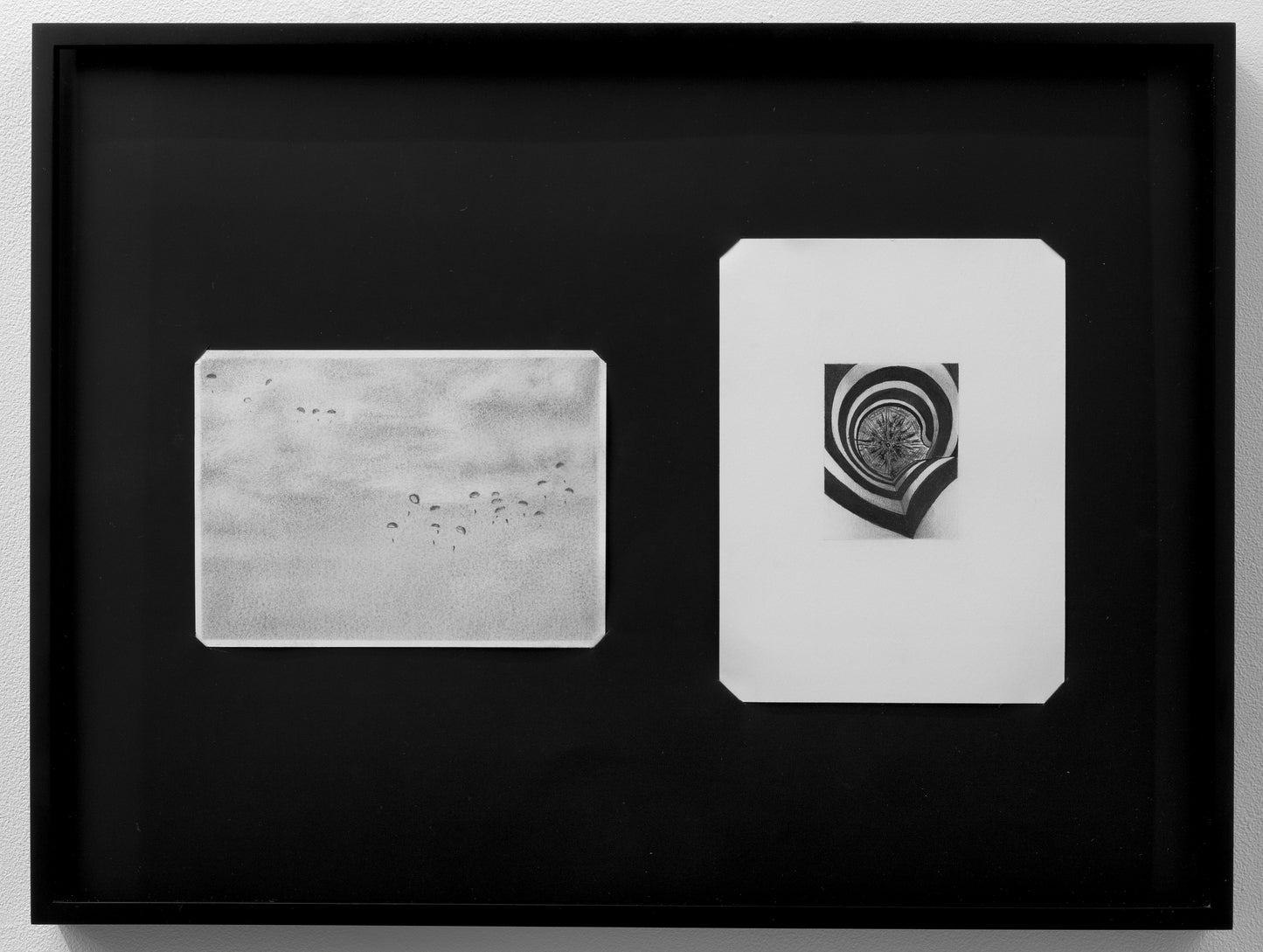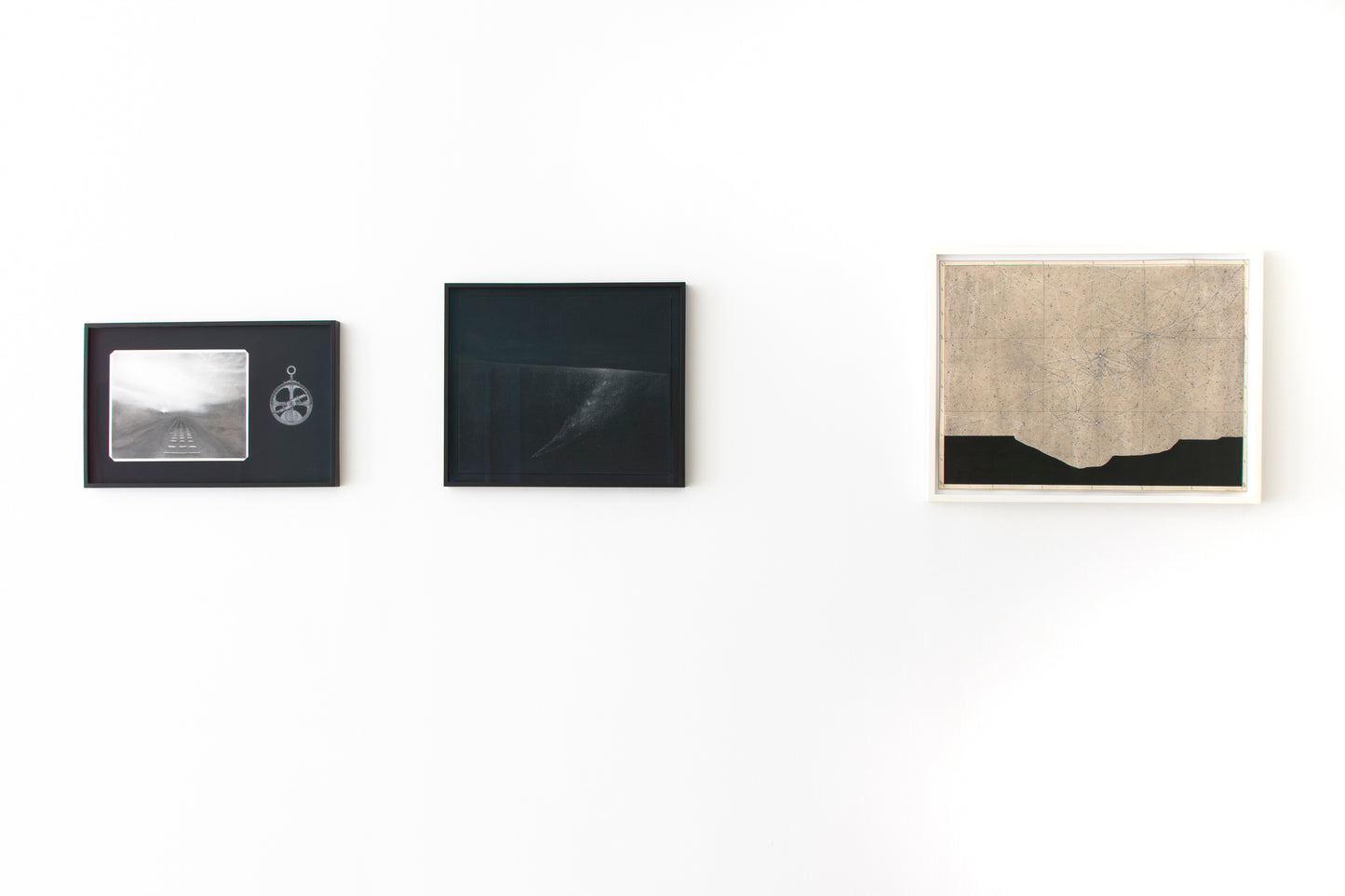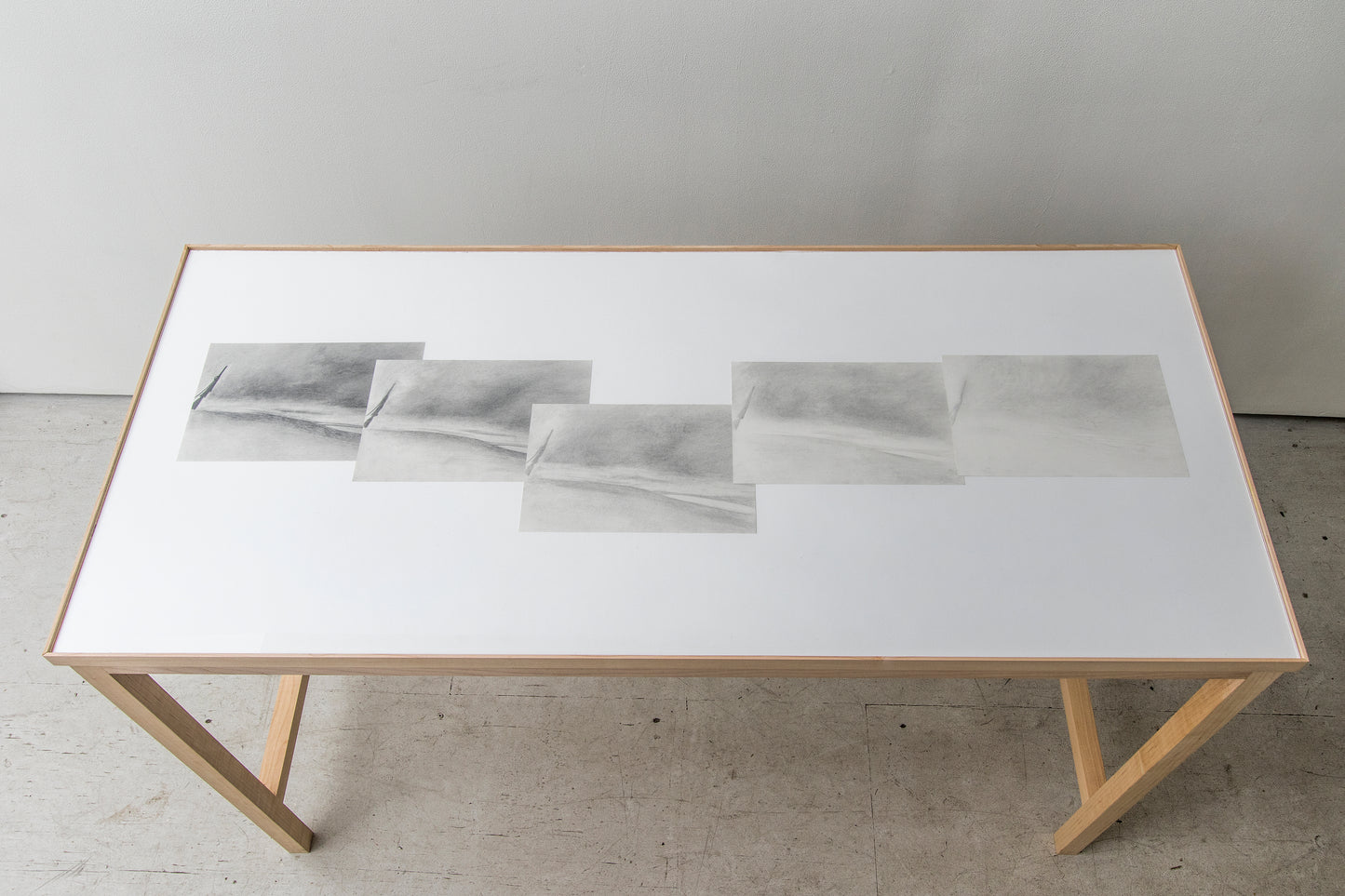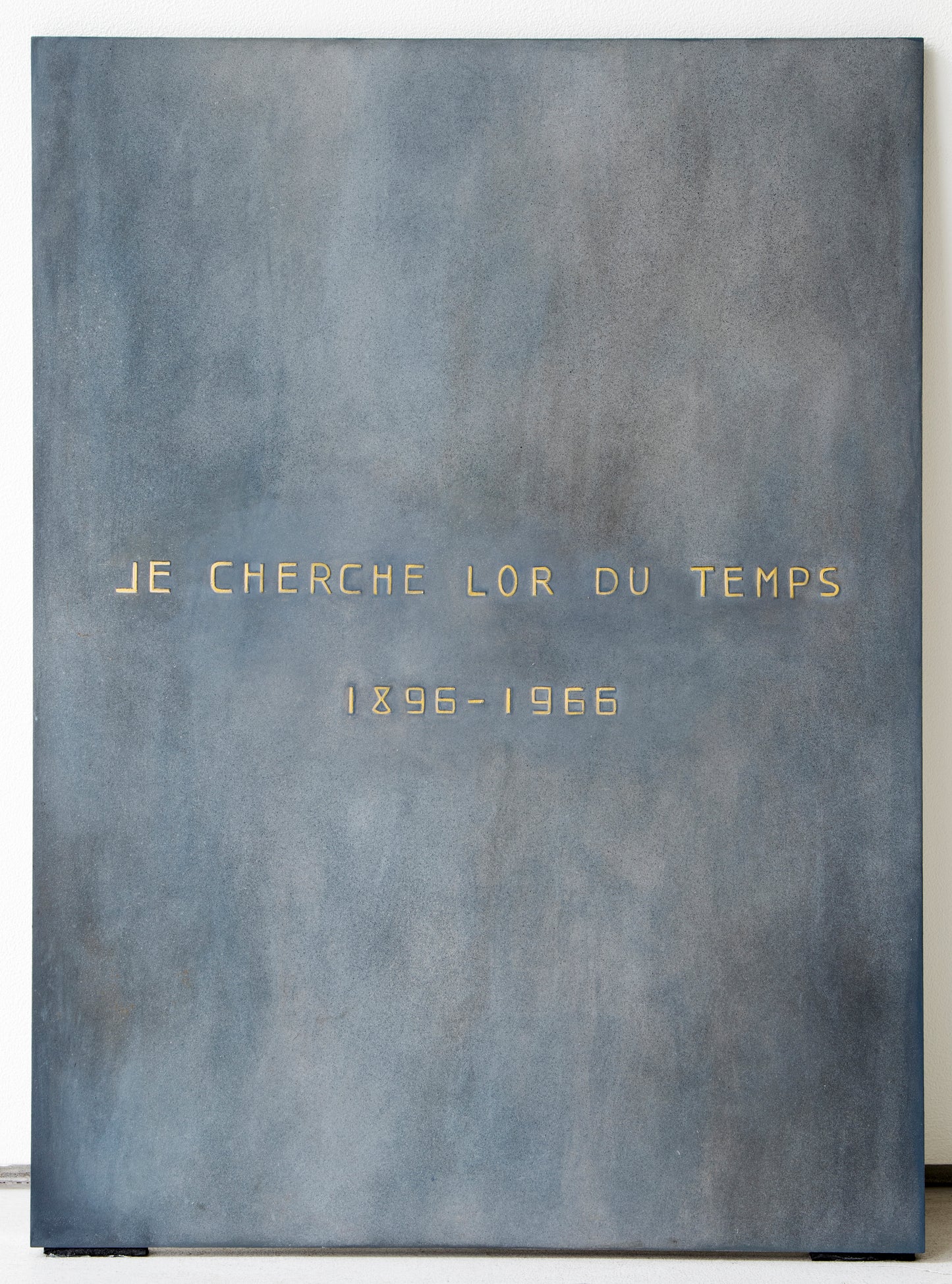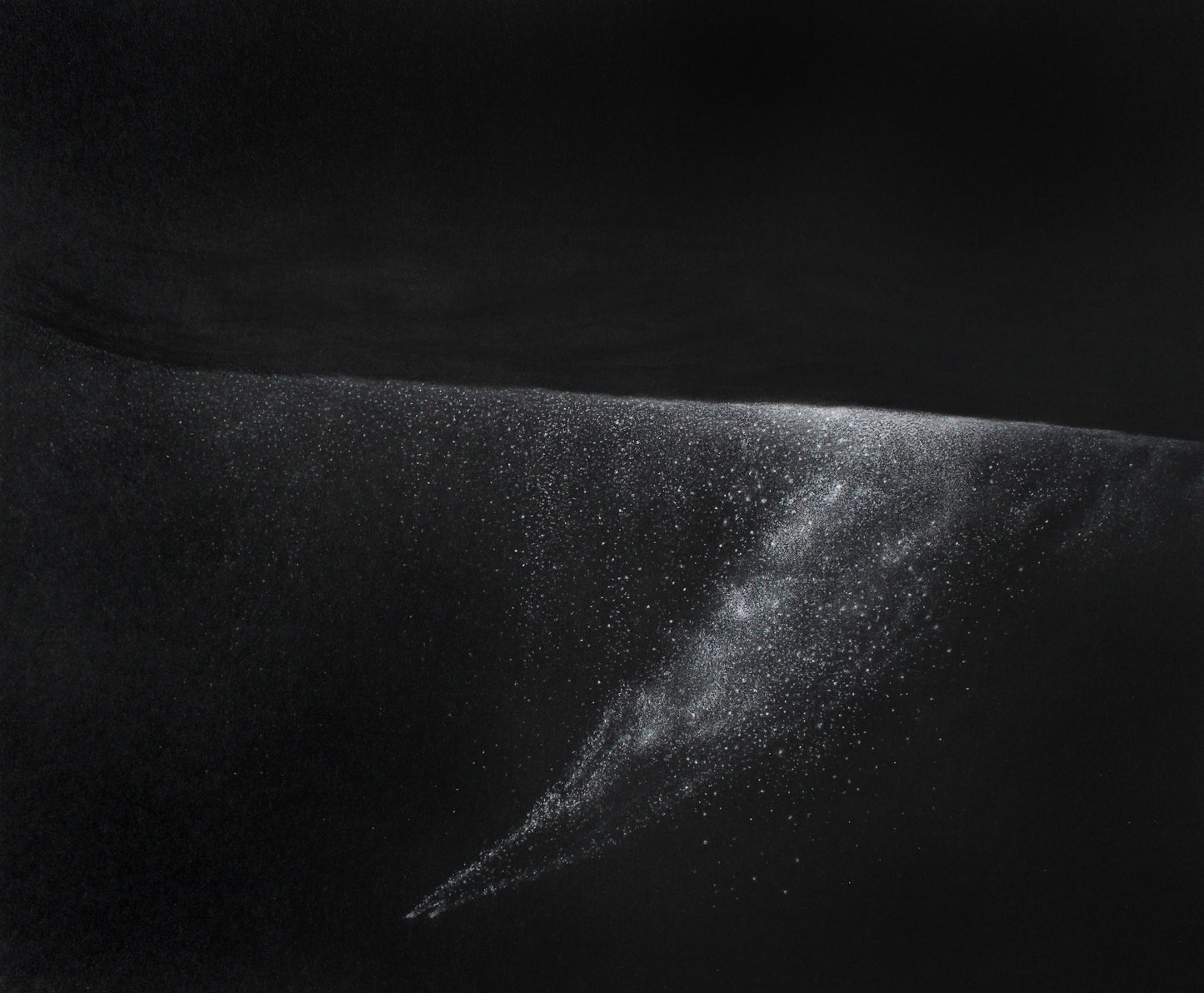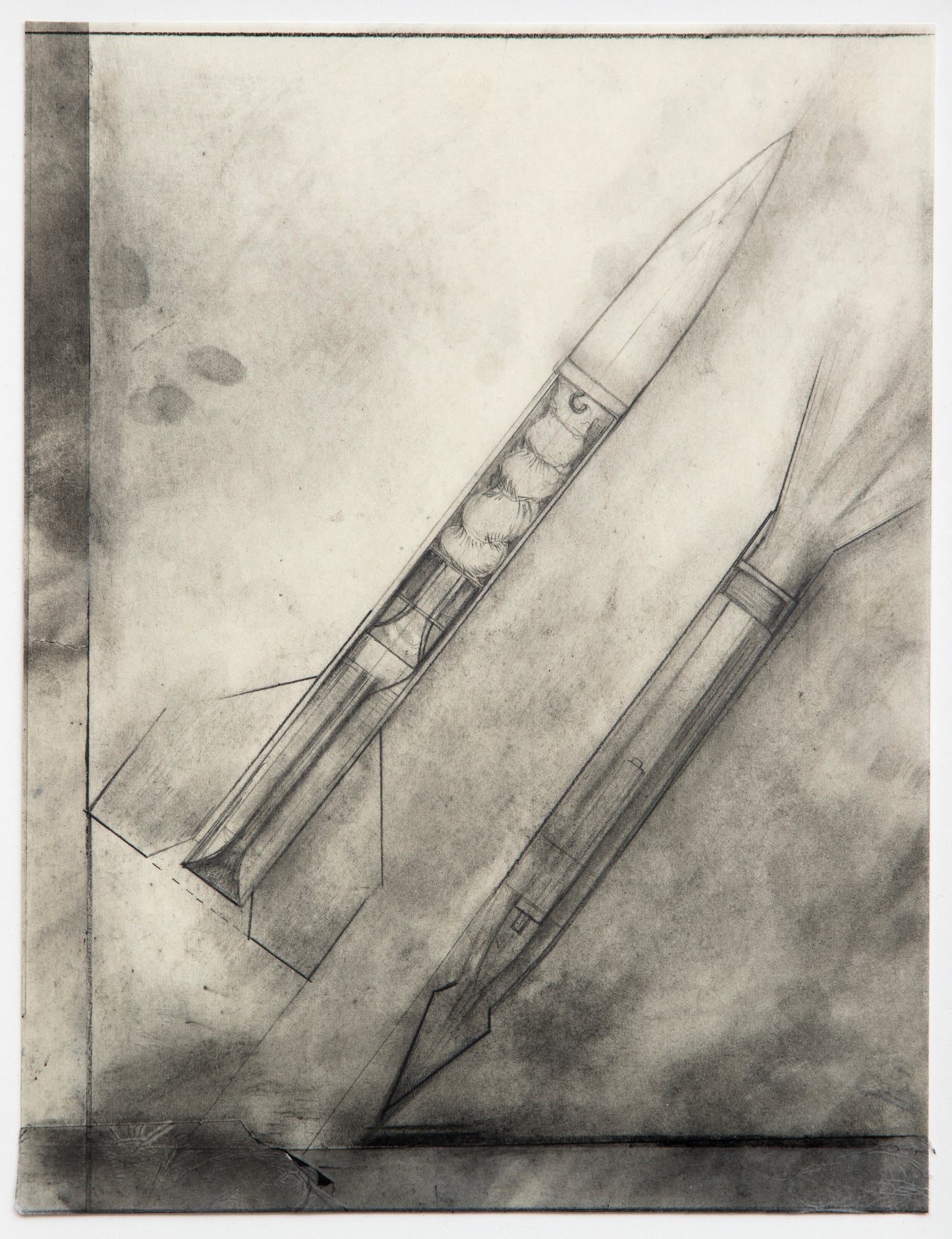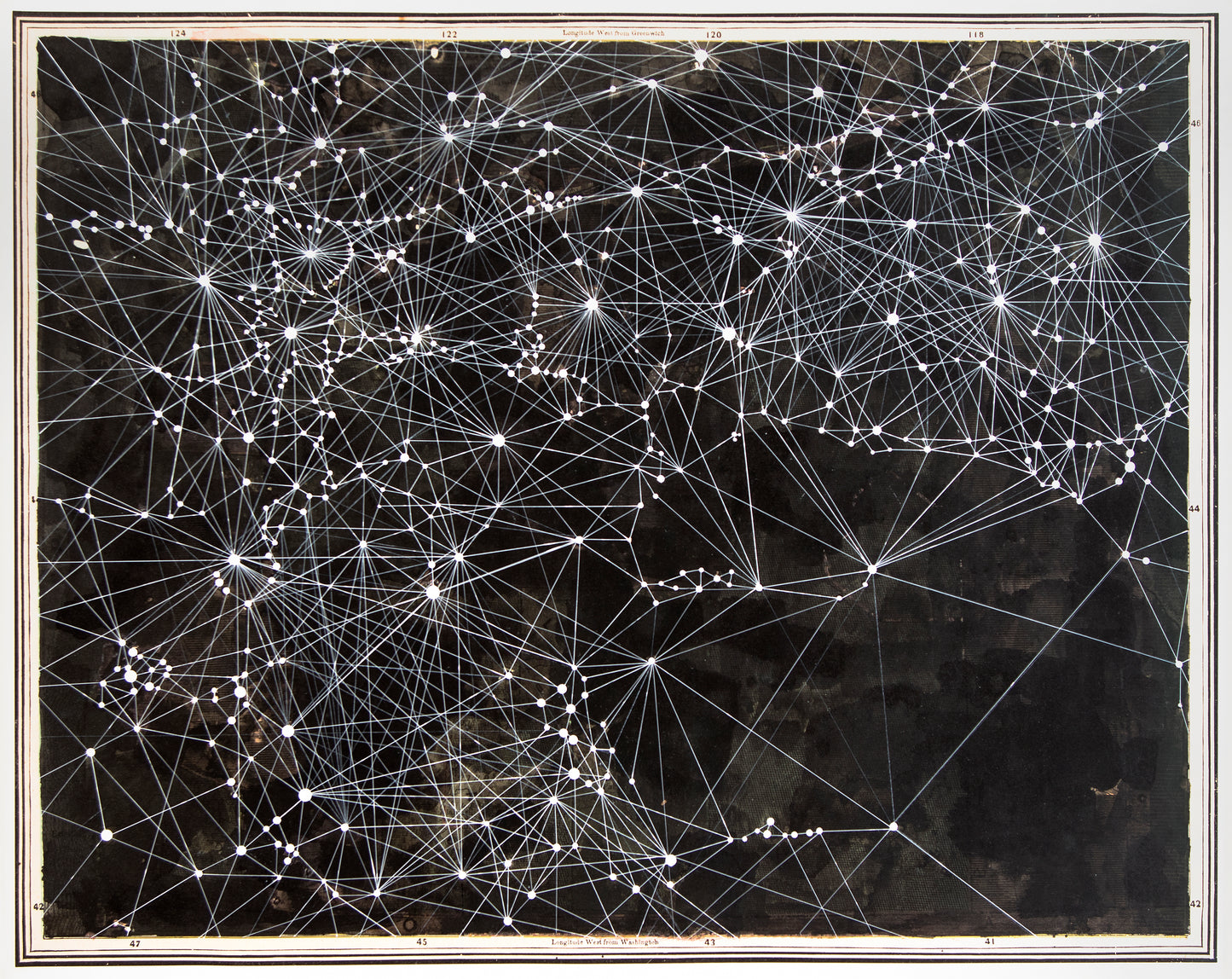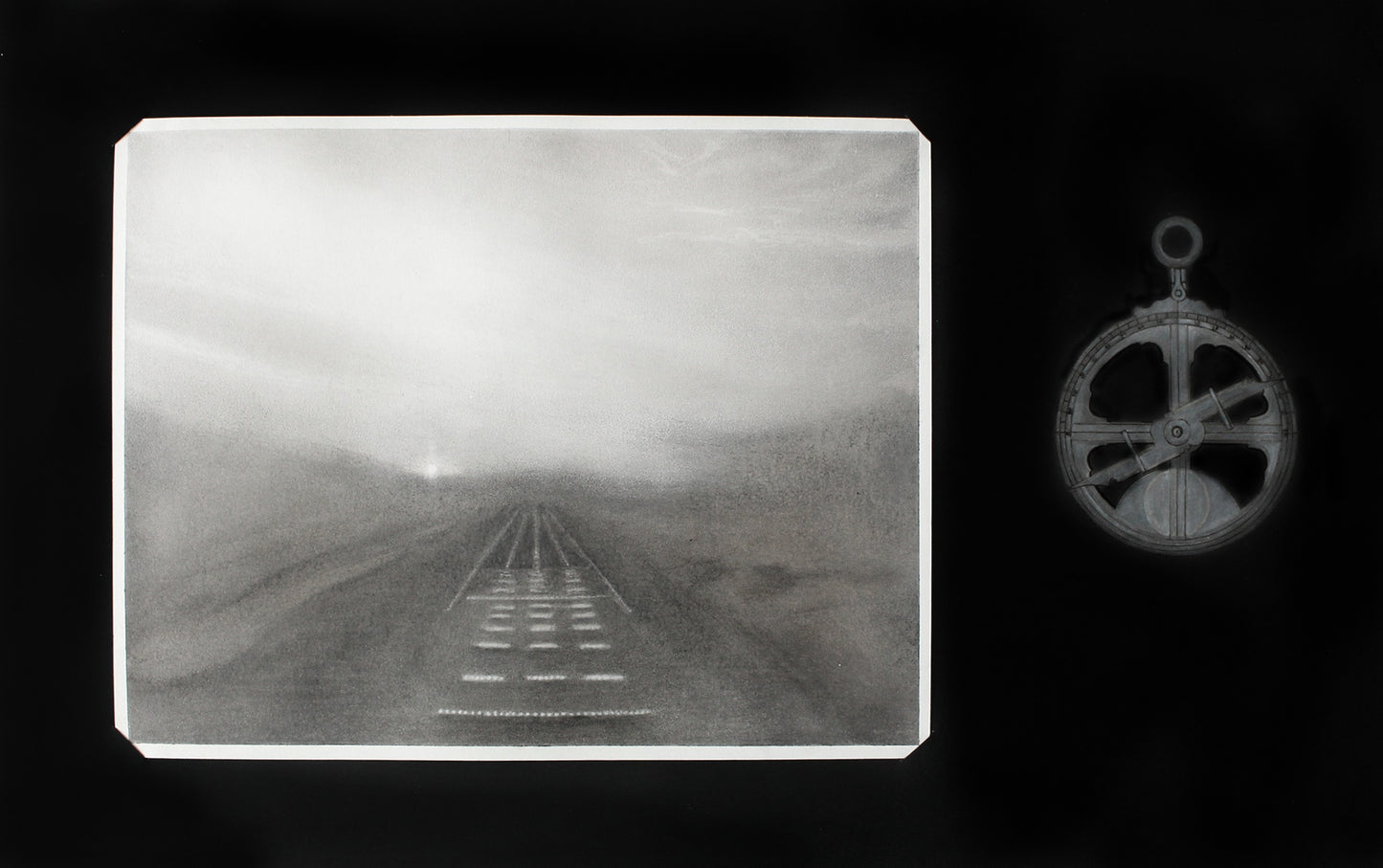Victoria Burge | Naho Taruishi
January 19 ‒ March 4, 2017
Planthouse presents a two-person show featuring new drawings, paintings and mixed media works by Victoria Burge and Naho Taruishi.
The artists share an interest in mapping, technical images, and architecture, emphasizing the contrasts of real, imagined and remembered within each of these genres. In their respective practices, Burge and Taruishi often translate or alter imagery from diagrams, maps, and photographs, in the process re-negotiating the patterns by which information is delivered. Themes of exploration, speculation and documentation pervade the work of these two artists, with Burge focusing on celestial and geographic mapping, and Taruishi highlighting the history of expeditions and unrecorded spaces and views.
Victoria Burge collects atlases, diagrams, and printed ephemera from the 19th and early 20th century and uses the materials as the infrastructure for her drawings. In her new works on view, Burge examines the dimensionality of space and its relationship to topography by exploring the opacities and depths of the color black and its inescapable relationship to light. Many of these works reference the Atlas Eclipticalis, a compendium of each star in the universe within the 1950.0 Equinox made by the Czech astronomer, Antonín Bečvár. The location and magnitude of these printed stars become Burge’s graphic anchors from which she builds interpretations of light and landscape through drawing. The authorities of print media and science are simultaneously honored and challenged.
In Taruishi’s new work, she challenges the mechanical limits of received visual information by rendering images and sites that were not recorded in the history of inventions, architecture and photography. Her interest in the effects of flight on our understanding of speed, space and time leads to a questioning of the documentation of the past. Taruishi’s 2016 graphite drawing- House of Aung Sunn Suu Kyi depicts an imagined floor plan of the building in which Suu Kyi lived under house arrest from 1989 to 2010, which Taruishi has based on rigorous examination of photographs of the building’s exterior. When an Image Forgets is derived from the famous photograph The Falling Soldier, taken by Robert Capa in 1936 during the Spanish Civil War. In Taruishi’s drawing, the rifle remains while the soldier has vanished, and the field of view is expanded. She prompts the viewer to recall the original photograph while pointing to an individual’s ability to re-write histories.
Victoria Burge (b. 1976, New York) studied Art History at Bard College, Annandale-on-Hudson, NY; holds an AS in Horticulture from the University of Massachusetts Amherst; a BA from Purchase College, State University of New York, Purchase; and an MFA in Book Arts and Printmaking from the University of the Arts, Philadelphia where she lives and works. Burge’s prints and drawings have been exhibited in museums and galleries, nationally and internationally, including Blum & Poe, Los Angeles, The Philadelphia Museum of Art, and Julian Page Fine Art, London. Burge’s work is held in several public and private collections including The Smithsonian Museum of American Art, Washington, DC; The New York Public Library, The Philadelphia Museum of Art, The British Museum, London; and The Hunterian Museum, Glasgow.
Naho Taruishi was born in Tokyo, Japan and currently lives and works in Brooklyn, NY. Her work has been shown both locally and abroad including at Planthouse Gallery, The Drawing Center, Artists Space, A.I.R Gallery, Show Room, and White Box, in New York, NY as well as shows at Rochester Institute of Technology, NY, Blue Star Contemporary Art Museum, TX, and RK Projects, RI among others. Her publication by Vincent FitzGerald & Co. is held in various institutional collections including the Library of Congress, New York Public Library, Harvard University and Lyrik Kabinett, in Munich, Germany. Taruishi has been awarded a Pollock-Krasner Foundation Grant. She also has received fellowships from The Drawing Center, the MacDowell Colony, the Watermill Center, and Atlantic Center for the Arts.
